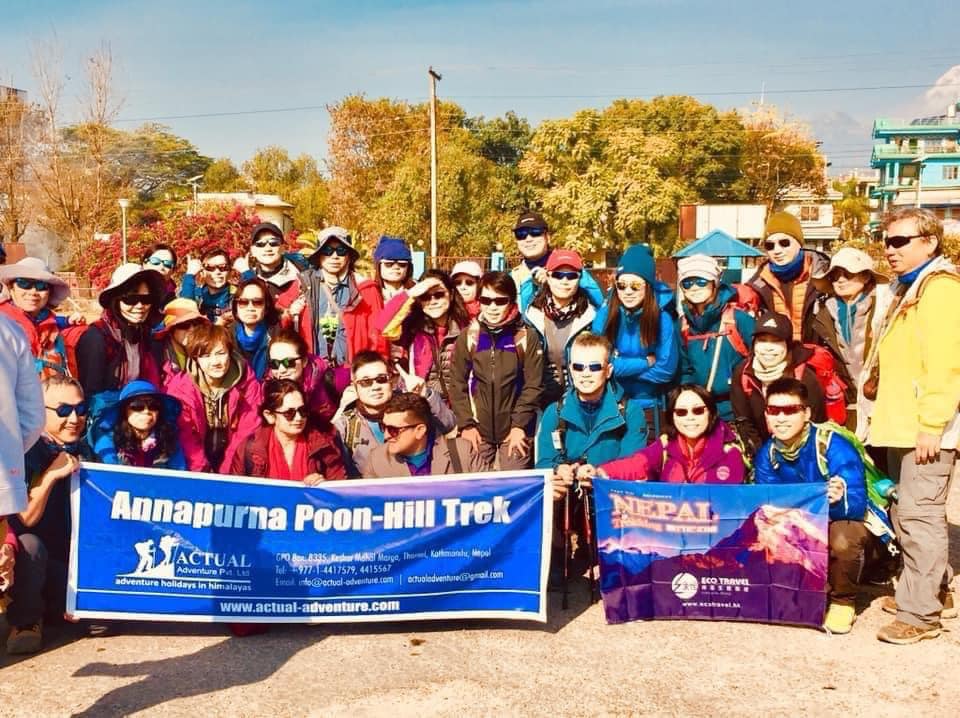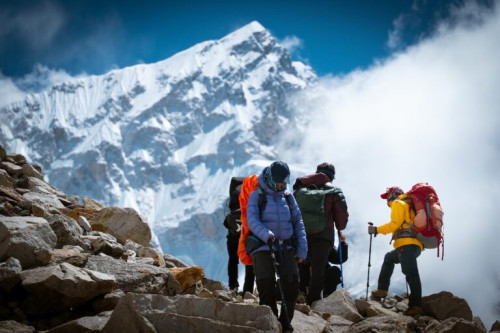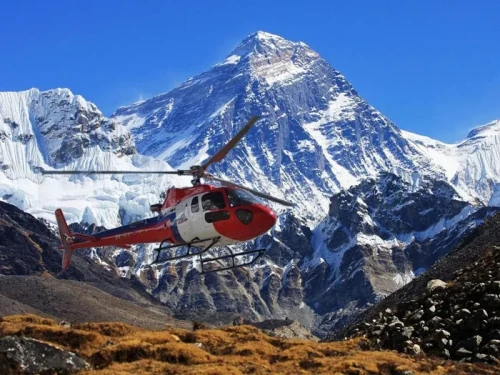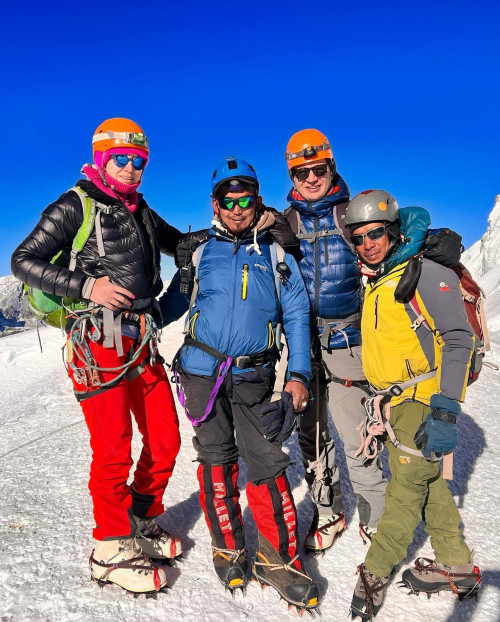Supporting Your Child for Their Gold Expedition A practical guide for parents, teachers and future outdoor experts

 Kedar Neupane
22nd Nov, 2025
Kedar Neupane
22nd Nov, 2025
Kedar Neupane
I am Kedar Neupane, a passionate traveler, entrepreneur, mentor, and social contributor, born and raised in a village near the Nepal-China border in Sindhupalchok, Nepal. With a Master’s degree in Business from Tribhuvan University and Level 2 proficiency in the German language, I have dedicated my life to tourism, trade, mentorship, and holistic well-being.
🌍 A Global Explorer with a Vision
Having explored 26+ countries, I have gained profound insights into diverse cultures, business landscapes, and global tourism. My travels have taken me to:
🇹🇭 Thailand | 🇧🇹 Bhutan | 🇲🇾 Malaysia | 🇸🇬 Singapore | 🇨🇳 China | 🇭🇰 Hong Kong | 🇩🇪 Germany | 🇵🇱 Poland | 🇦🇹 Austria | 🇨🇭 Switzerland | 🇭🇺 Hungary | 🇳🇱 Netherlands | 🇧🇪 Belgium | 🇫🇷 France | 🇦🇪 UAE | 🇬🇧 UK | 🇺🇸 USA | 🇹🇷 Turkey | 🇶🇦 Qatar | 🇮🇳 India | 🇮🇩 Indonesia | 🇨🇦 Canada
Through my journeys, I have developed a deep appreciation for cultural exchange, adventure tourism, and sustainable business practices.
🏔️ Entrepreneurial & Professional Journey
I am actively involved in tourism, trade, and mentorship, leading multiple ventures that promote sustainable travel, adventure tourism, and business development:
✔ Founder & MD – Actual Adventure Pvt. Ltd. (A leading adventure travel company in Nepal)
✔ CEO – Himalayas Destination Management Company (Creating premium travel experiences)
✔ MD – Nepal Export & Import Pvt. Ltd. (Promoting Nepalese products globally)
✔ MD – Actual Mentor Pvt. Ltd. (Empowering entrepreneurs and professionals)
✔ Chairman – World Expedition Nepal (Focusing on high-altitude expeditions and trekking)
Through my entrepreneurial journey, social contributions, global explorations, and commitment to lifelong learning, I strive to inspire others to pursue their passions while making a meaningful difference. My dream is to build a world where travel, business, and holistic well-being come together, fostering growth, sustainability, and happiness for all.
Gold Expeditions and school adventure programs are powerful experiences that build confidence, leadership and resilience in children. This guide gives parents, teachers and adults practical steps: start small, train safely, practice wilderness skills, choose beginner-friendly hikes in Nepal, and explore how an outdoor passion can become a career.
Table of Contents
Quick Start: Where to begin
Start short, keep it fun, and build skills gradually. The best way to introduce children—or beginners of any age—to outdoor adventure is through simple, enjoyable activities that slowly build confidence. Begin with short walks in your neighborhood, local parks, or community trails where the focus is on exploration rather than distance. Allow kids to stop, observe nature, and enjoy the experience at their own pace. As they grow more comfortable, gradually extend the duration and difficulty of outings, incorporating small hills, forest paths, or half-day hikes. Schools and youth groups can support this progression by organizing regular outdoor days, nature clubs, and easy weekend hikes that emphasize teamwork and curiosity. Over time, these fun and low-pressure experiences naturally develop essential outdoor skills—map reading, understanding weather, basic first aid, and responsible environmental behavior. With consistent encouragement, children gain the confidence needed to join longer treks and eventually participate in structured expeditions such as Duke of Edinburgh / Gold Level adventures.
Progression plan
- Backyard camping — learn tents, flashlight use, simple chores.
- Day hikes — 2–4 hours on gentle trails; teach pacing and breaks.
- Overnight practice — a simple overnight with a small pack.
- Multi-day prep — longer walks, teach basic navigation and first aid.
- Adventure jungle and wildlife activities
Top safety rules
- Always plan and share an itinerary with a responsible adult.
- Keep a small, child-friendly first aid kit at all times.
- Dress in layers and check weather before heading out.
- Hydrate often and carry more water than you think you'll need.
Sample one-day family hike (easy)
Duration: 3–4 hours total — Distance: 4–8 km — Who: families, children 7+
- Start slow, do frequent rest and snack breaks.
- Bring binoculars, a simple map, and a scavenger-hunt list.
- Turn learning into play: bird ID, leaf rubbing, storytelling.
Run a Weekly Family/School Walk
Running a weekly family or school walk is one of the simplest and most effective ways to build a child’s hiking foundation. These short, consistent outings help children become familiar with natural environments, practice walking at a steady pace, and gradually improve their stamina. Whether done in a neighborhood park, local forest, or school grounds, weekly walks teach pacing, listening to instructions, and trail awareness. Over time, children start understanding basic outdoor etiquette such as staying together, respecting nature, and carrying their own small backpack. Regular walking also helps identify each child’s strengths and challenges, which becomes essential when preparing for a full Gold Expedition. Consistency builds confidence, and confidence builds capability — one walk at a time.
Practice Packing and Sleeping Outdoors
Before undertaking a real expedition, children need hands-on practice with packing and spending a night outdoors. Start by teaching them how to pack their rucksack: what goes at the bottom, what must stay accessible, and how to distribute weight evenly. This simple skill reduces fatigue during longer hikes. Setting up a tent at home or on the school field introduces kids to shelter-building, sleeping bag use, and nighttime routines. A backyard or school-yard “camp night” helps children understand temperature changes, darkness, and unfamiliar outdoor sounds in a safe environment. This trial run ensures they are not overwhelmed during the actual expedition and allows them to learn essential camping discipline — staying organized, keeping gear dry, and following safety instructions.
Do a Mock Emergency Drill With Children
Outdoor safety becomes second nature only through practice, not theory. A mock emergency drill prepares children for unexpected situations such as minor falls, getting separated, or sudden weather changes. Teach them simple, age-appropriate steps: staying calm, staying with the group, using a whistle, identifying landmarks, and notifying an adult. Practicing first-aid basics like bandaging small cuts and recognizing altitude-related symptoms helps children feel empowered rather than fearful. Schools and families can simulate scenarios like “lost on the trail” or “bad weather approaching” to teach decision-making. These drills build trust between children and their adult leaders and help ensure that when the real expedition begins, safety is a shared responsibility — not just the guide’s job.
Keep a Log of Hikes to Measure Progress
A hiking log is an incredibly effective tool for motivation and long-term progress. Children can record the date, distance, duration, highlights, challenges, and what they learned on each outing. Over time, the log becomes a visual record of increasing strength and endurance. It also teaches children reflection, planning, and taking pride in their own growth. Schools can use this log to assess readiness for longer treks, while parents can use it to identify what gear or habits their child needs to improve. For Gold Expedition preparation, a training log also demonstrates consistency and commitment — two important qualities for outdoor adventures. Reviewing the log together helps celebrate milestones and motivates children to set new goals.
Recommended beginner hikes in Nepal
| Hike / Location | Highlights | Why It’s Good for Kids & Schools |
|---|---|---|
| Nagarkot Nature Hike | • Close to Kathmandu • Panoramic sunrise views • Easy forest trails • Ideal half-day or one-day adventure |
Perfect for families and school programs: Short travel time, minimum logistics, and safe trails make it perfect for beginners. |
| Australian Camp / Dhampus | • Short, scenic trek near Pokhara • Tea houses and rest stops • Stunning Machhapuchhre views |
Best for building early trekking habits: Gentle paths, village interaction, and clear mountain views keep kids motivated. |
| Shivapuri National Park | • Forest trails & wildlife • Map-reading practice • Steady uphill challenge • Very close to Kathmandu |
Ideal for outdoor skill development: Schools can teach navigation, biodiversity, teamwork and safe hiking practices. |
| Ghandruk Short Trek | • Gurung culture experience • Steps-based walking • Beautiful Annapurna views • Multiple route options |
Great for stamina building: The well-maintained steps help beginners prepare for longer treks like ABC or EBC. |
Prepare: physical & mental training
Goal: children should be comfortable walking 6–8 hours a day for Gold-level expeditions. Train progressively.
- Daily walks (start 20–30 minutes, build to 60+ minutes)
- Hill repeats or stairs for leg strength
- Light backpack practice with 3–6 kg weight
- Mental drills: teamwork games and simple decision-making scenarios
Quick checklist (child's pack)
- Daypack (18–28 L)
- Trekking shoes + spare socks
- Water bottle or hydration bladder
- Rain jacket + warm mid layer
- Sun hat, sunglasses, sunscreen
- Energy snacks and small lunch
- Headlamp and whistle
- Personal first-aid items (plasters, blister kit)
Safety tips for parents & leaders
Keep groups small (ideal 6–8 children per adult) and brief frequent check-ins.
- Assign a buddy for each child.
- Carry an emergency contact list and local map.
- Use simple radio or phone check when possible. Download printable checklist
Programs & curriculum ideas for schools
Schools can scaffold outdoor learning across grades. Below are sample units and workshop ideas that fit into term plans.
- Grade 4: Local nature walks, plant ID and responsible behaviour.
- Grade 6: Day hikes with navigation basics and map skills.
- Grade 8: Overnight camps with cooking, tent pitching, and simple leadership roles.
- Skill workshops: Wilderness first aid, low-angle ropework, Leave No Trace ethics.
Sample full-day school program (8:30–15:00)
- 8:30 — arrival, safety briefing and warm-up games
- 9:00 — guided nature walk with assigned observation tasks
- 11:00 — snack break and short navigation game
- 12:00 — lunch, free exploration with teacher checkpoints
- 13:00 — team challenges (build a shelter, knot-tying relays)
- 14:30 — reflection circle, return transport
How outdoor adventures can become a career
For young people who love the outdoors, there are many meaningful career pathways. Here are pragmatic steps to help them become professional outdoor experts.
Steps to become an outdoor expert
- Volunteer with local trekking groups and school outings to gain experience.
- Complete relevant certifications: wilderness first aid, trekking guide training, mountain safety courses.
- Apprentice under experienced guides and shadow expedition leaders.
- Start small (local guiding) then expand to multi-day and technical expeditions.
- Develop complementary skills: language, hospitality, environmental education, GPS navigation.
Tip: Encourage responsible leadership — skills like communication, risk assessment and empathy matter as much as map-reading.
Career roles
- Trekking Guide / Local Guide
- Expedition Leader
- Outdoor Education Instructor
- Wilderness Medic / First Responder
- Tour Operator & Eco-tourism Entrepreneur
Why Outdoor Adventure is Crucial for Children
Outdoor adventure is more than just fun—it’s a powerful tool for a child’s physical, mental, and emotional growth. Engaging children in outdoor activities helps them develop essential life skills while fostering a love for nature. Programs like Gold Expeditions and school outdoor initiatives make these benefits even more impactful by providing structured, safe, and challenging experiences.
Key Benefits of Outdoor Adventure for Children
-
Builds Confidence and Self-Belief
Outdoor adventures push children out of their comfort zones, teaching them to overcome challenges and celebrate accomplishments. Whether it’s setting up a tent for the first time or completing a short trek, each success reinforces their self-confidence. -
Improves Decision-Making and Teamwork
Nature-based activities often require children to make choices, plan routes, and solve problems collaboratively. These experiences cultivate critical thinking, communication, and cooperative skills—traits that are essential in academics and everyday life. -
Encourages Physical Fitness and Mental Resilience
Hiking, camping, and other outdoor activities strengthen endurance, flexibility, and overall fitness. Simultaneously, facing unpredictable weather or trail challenges builds mental resilience and teaches children to remain calm under pressure. -
Boosts Creativity and Reduces Screen Dependency
Nature encourages exploration, observation, and imaginative play. Time spent outdoors reduces reliance on digital devices, allowing children to develop creativity and problem-solving skills in real-world environments. -
Creates Emotional Bonding Within Family and Friends
Shared outdoor experiences foster strong family ties and friendships. Children learn empathy, patience, and cooperation while enjoying adventures with loved ones. -
Teaches Responsibility and Survival Basics
Activities like packing a backpack, reading maps, or following trail markers instill responsibility and practical survival skills, preparing children for future adventures and independent experiences.
Start Small: Simple Outdoor Activities for Children
Before venturing on longer expeditions, it’s essential to build skills and confidence gradually. Here are easy ways to start:
-
Backyard Camping
-
Teach pitching a tent, organizing gear, and using headlamps.
-
Children learn to manage small tasks and stay responsible in a controlled environment.
-
-
Nature Walks & Short Day Hikes
-
Visit local parks, hill trails, or community forests.
-
Encourage kids to set the pace, identify wildlife, or take photographs.
-
-
Gear Familiarization
Teach children to:-
Wear hiking boots properly
-
Pack and carry a daypack efficiently
-
Use a water bottle or hydration system
-
Layer clothing to stay warm, dry, and safe
-
Short & Easy Hikes in Nepal Perfect for Kids
Nepal offers a rich outdoor classroom for children preparing for school expeditions or Gold Awards. Beginner-friendly hikes include:
-
Ghandruk Village Hike (2–3 days)
-
Easy stone steps, cultural exposure to Gurung villages, and stunning mountain views.
-
-
Nagarkot Nature Hike (1 day)
-
Ideal for Kathmandu-based families and schools seeking a simple day trip.
-
-
Australian Camp – Dhampus (1–2 days)
-
Short, scenic, and beginner-friendly trekking experience.
-
-
Shivapuri National Park Hike
-
A great location for learning map reading and forest exploration.
-
-
Kapan – Sundarijal – Chisapani Trail
-
Multi-day beginner-level trail that teaches pacing, backpack handling, and teamwork.
-
These hikes are perfect for teaching children basic navigation, teamwork, and outdoor etiquette in a safe environment.
Preparing Your Child for Their Gold Expedition
-
Build Physical Fitness
Gold Expeditions typically involve 6–8 hours of daily walking. Encourage:-
Daily walks or running
-
Hill climbing
-
Light backpack training
-
Stretching and mobility exercises
-
-
Strengthen Mental Readiness
Teach children to:-
Stay calm under pressure
-
Make decisions in unpredictable conditions
-
Take responsibility for themselves and their team
-
-
Train Them to Pack Their Own Gear
Essential items include:-
Backpack, sleeping bag, waterproof jacket
-
Trekking shoes, first aid kit
-
Map, compass, snacks, water bottle
-
-
Teach Outdoor Safety Basics
-
Follow trail markers
-
Stay with the team
-
Respect wildlife and the environment
-
Maintain proper hydration and nutrition
-
-
Do a Practice Expedition
A practice hike or overnight trip helps children gain confidence and identify necessary gear adjustments before a full Gold Expedition.
Adventure with Kids: Safety Tips for Parents
-
Choose age-appropriate trails
-
Keep hydration and snacks available
-
Ensure proper footwear and gear
-
Pack wisely but lightly
-
Monitor altitude and weather conditions
-
Lead by example; children mirror adult behavior
-
Celebrate small achievements
Outdoor Adventure Programs for Schools
Schools can structure outdoor programs to enhance leadership, teamwork, and environmental awareness:
-
Nature discovery trips
-
Survival skill workshops
-
Team-building outdoor camps
-
Map-reading and navigation courses
-
Environmental awareness treks
-
Multi-day adventure expeditions
How Outdoor Adventures Shape Future Careers
- Children exposed to outdoor activities often develop lifelong passions that can translate into rewarding careers:
- Trekking guide or expedition leader
- Mountaineering instructor
- Outdoor education teacher
- Wilderness first responder
- National park ranger
- Nature conservationist
- Adventure travel entrepreneur
Trekking Guide or Expedition Leader
Children who grow up exploring trails, forests, and mountains often develop an intimate understanding of terrain, weather patterns, and navigation. This experience lays the foundation for a career as a trekking guide or expedition leader, where adults lead groups safely through challenging landscapes. Beyond technical skills, they learn leadership, communication, risk management, and client care. Starting with small hikes and school excursions gives future guides confidence in route planning, pacing, and group coordination. Over time, they may lead multi-day treks, international expeditions, or specialized adventure tours.
Mountaineering Instructor
For children fascinated by mountains, climbing, and technical skills, early exposure to outdoor adventure can evolve into a career as a mountaineering instructor. These professionals teach rock climbing, ice climbing, glacier navigation, and high-altitude trekking techniques. Early practice builds stamina, balance, and problem-solving skills, while structured learning in youth programs fosters discipline and safety awareness. Mountaineering instructors combine physical skill with teaching ability, helping others develop confidence in extreme environments and inspiring the next generation of climbers.
Outdoor Education Teacher
Children who participate in nature walks, camping, and structured outdoor lessons often discover a passion for teaching in natural settings. An outdoor education teacher develops and leads programs for schools, youth organizations, or community centers. They blend environmental knowledge with leadership, teamwork exercises, and practical survival skills. Exposure to early outdoor activities equips teachers to design age-appropriate lessons, promote ecological awareness, and cultivate resilience, curiosity, and problem-solving skills in young learners.
Wilderness First Responder
Early experience in outdoor adventure teaches children to recognize hazards, respond to minor injuries, and navigate safely — skills that translate into a career as a wilderness first responder. These professionals provide medical care in remote or challenging environments, including high-altitude trails, forests, and backcountry areas. Youth who practice basic first aid, emergency drills, and trail awareness are better prepared for the discipline and decision-making required in this field. The combination of medical knowledge, outdoor skills, and calm judgment under pressure makes this career highly rewarding and impactful.
National Park Ranger
Children exposed to hiking, wildlife observation, and nature study often develop a love for natural environments and conservation. A national park ranger protects ecosystems, guides visitors, and enforces regulations to preserve wildlife and natural landscapes. Early outdoor experiences instill familiarity with flora, fauna, and navigation, while fostering patience, observation, and environmental ethics. Rangers often educate the public, lead tours, and ensure that outdoor spaces remain safe and sustainable, making it a fulfilling career for those who want to combine adventure with stewardship.
Nature Conservationist
Children who spend time outdoors learn the value of ecosystems, biodiversity, and sustainable practices. This awareness can grow into a career as a nature conservationist, working to protect endangered species, restore habitats, or research ecological systems. Early outdoor activity teaches observation, documentation, and an appreciation for the balance of nature. Conservationists often collaborate with communities, governments, and international organizations, combining fieldwork with advocacy and education to make a lasting environmental impact.
Adventure Travel Entrepreneur
For children inspired by exploring trails, mountains, and cultural landscapes, a career as an adventure travel entrepreneur allows them to turn their passion into a business. They design trekking packages, adventure tours, and outdoor experiences for families, schools, and international travelers. Early exposure to outdoor challenges fosters leadership, creativity, logistics planning, and risk management. Over time, entrepreneurs can build sustainable businesses that promote responsible tourism while sharing their love for nature and adventure with others.
Supporting outdoor adventures today opens doors for children to build fulfilling professional and personal lives tomorrow.
Hiking With Kids, Families & School Groups – Complete FAQ Guide
This guide helps parents, teachers, youth leaders and beginner trekkers understand how to safely introduce children to outdoor adventures. Whether preparing for school trips, family hikes, or Duke of Edinburgh–style expeditions, this FAQ covers all essential information.
Frequently Asked Questions (FAQ)
1. What age is best to start hiking?
Children as young as 5 years old can enjoy short, easy nature walks of up to one hour. These early experiences help build comfort and confidence outdoors. For structured hiking, youth programs, and beginner treks, the ideal age is 10+. By age 12–14, most children can join full-day hikes and training for longer expeditions.
2. How do I manage food and hydration for kids?
Kids require small, frequent snacks to maintain energy during hikes. Offer nuts, fruits, granola bars, crackers, or sandwiches every 45–60 minutes. Encourage children to take sips of water every 15–20 minutes to stay hydrated. Avoid sugary drinks that cause energy crashes.
3. How many adults per child are safe on school trips?
A safe supervision ratio is 1 adult per 6–8 children on easy hikes. For more remote terrain or younger groups, increase to 1 adult per 4–5 children. Include adults trained in first aid, navigation, and communication for safety.
4. How far can kids realistically hike in a day?
| Age | Recommended Distance |
|---|---|
| 4–6 years | 1–3 km (short nature walks) |
| 7–9 years | 3–6 km |
| 10–12 years | 6–10 km |
| 13–16 years | 10–15+ km |
5. What essential gear should kids carry?
Children should carry only lightweight personal items, such as:
- 10–15L daypack
- Water bottle
- Light jacket
- Snacks
- Sunscreen
- Hat and gloves
- Emergency whistle
Adults should carry heavier equipment like first-aid kits and extra layers.
6. How do I keep children motivated during hikes?
Use games, nature observation and small goals to keep hikes fun:
- Break the route into short milestones
- Play “spot the bird/leaf/animal”
- Give kids small responsibilities (map-carrying)
- Take scenic photo breaks
- Celebrate achievements with snacks or rewards
7. What safety precautions should families and schools follow?
- Check the weather before departure
- Stay on marked trails
- Use proper footwear
- Carry a first-aid kit
- Use whistle communication signals
- Teach kids not to wander out of sight
8. How do I prepare a child for their first full-day hike?
Start with shorter practice walks, make sure shoes fit well, sleep early the night before, and pack enough food and warm clothing. Explain the trail plan to reduce anxiety and help them feel involved.
9. Should children carry their own backpack?
Yes, but keep it light. Children should carry no more than 10–15% of their body weight.
10. What is the best season for hiking with kids in Nepal?
The best seasons are:
- Spring (March–May) – Blooming forests, pleasant temperatures
- Autumn (September–November) – Clear skies, stable weather
11. Can kids join multi-day treks like Ghandruk or Australian Camp?
Yes. These beginner-friendly treks are perfect for families and school groups. Routes offer tea-houses, manageable distances, and cultural exposure. Ideal for kids above age 7–8.
12. What should parents or teachers do if a child becomes tired?
Slow down, take more breaks, provide snacks or warm drinks, and shorten the route if necessary. Never pressure a child to continue if they are distressed or exhausted.
13. Are trekking poles useful for kids?
Yes. Adjustable trekking poles help children maintain balance and reduce knee strain, especially on steep descents.
14. How do I teach children to respect nature?
- Do not pick plants or disturb wildlife
- Carry all trash out
- Stay on designated trails
- Respect local communities and traditions
15. What are signs of altitude sickness in children?
Watch for headache, nausea, fatigue, irritability, or loss of appetite. For hikes above 3,000m, descend immediately if symptoms worsen. Children should acclimatize more gradually than adults.
Final checklist & next steps
Start small, be consistent, and celebrate progress. Use regular short hikes to build stamina and confidence — then plan a practice overnight before a full Gold Expedition.
- Run a weekly family/school walk
- Practice packing and sleeping outdoors
- Do a mock emergency drill with children
- Keep a log of hikes to measure progress
Comparison Table: Outdoor Adventure Programs
| Category | Children (Kids & Teens) | Adults | School / Group Programs |
|---|---|---|---|
| Focus Area | Basic skills, confidence building, teamwork | Technical skills, endurance, leadership | Holistic learning, safety training, group coordination |
| Recommended Activities | Short hikes, camping, outdoor games | Long treks, peak climbing, extended expeditions | Field trips, nature walks, structured adventure camps |
| Difficulty Level | Easy → Moderate | Moderate → Challenging | Easy → Moderate (depending on age/group size) |
| Popular Destinations in Nepal | Nagarkot, Shivapuri, Ghandruk | Annapurna Circuit, Everest Base Camp, Langtang | Pokhara learning trails, Chitwan educational tours |
| Skill Outcomes | Confidence, survival basics, communication | Navigation, expedition planning, resilience | Environmental awareness, responsibility, teamwork |
Final Thoughts
Encouraging children to participate in outdoor adventures fosters confidence, resilience, responsibility, and a love for nature. Nepal’s breathtaking landscapes make it the perfect classroom for learning, exploration, and adventure. By starting small, prioritizing safety, and building skills gradually, children can grow into confident adventurers—perhaps even future outdoor experts. Want this as a PDF or formatted for your website? Get the formatted files
Published by Actual Adventure Pvt. Ltd. — Author: Kedar Neupane — Nov 22, 2025 Contact: contact@actualadventure.com | Follow safety standards and local regulations when planning trips.
Recent Posts

18th Nov, 2025

14th Nov, 2025

12th Nov, 2025

28th Oct, 2025

19th Oct, 2025

18th Oct, 2025

14th Oct, 2025


















